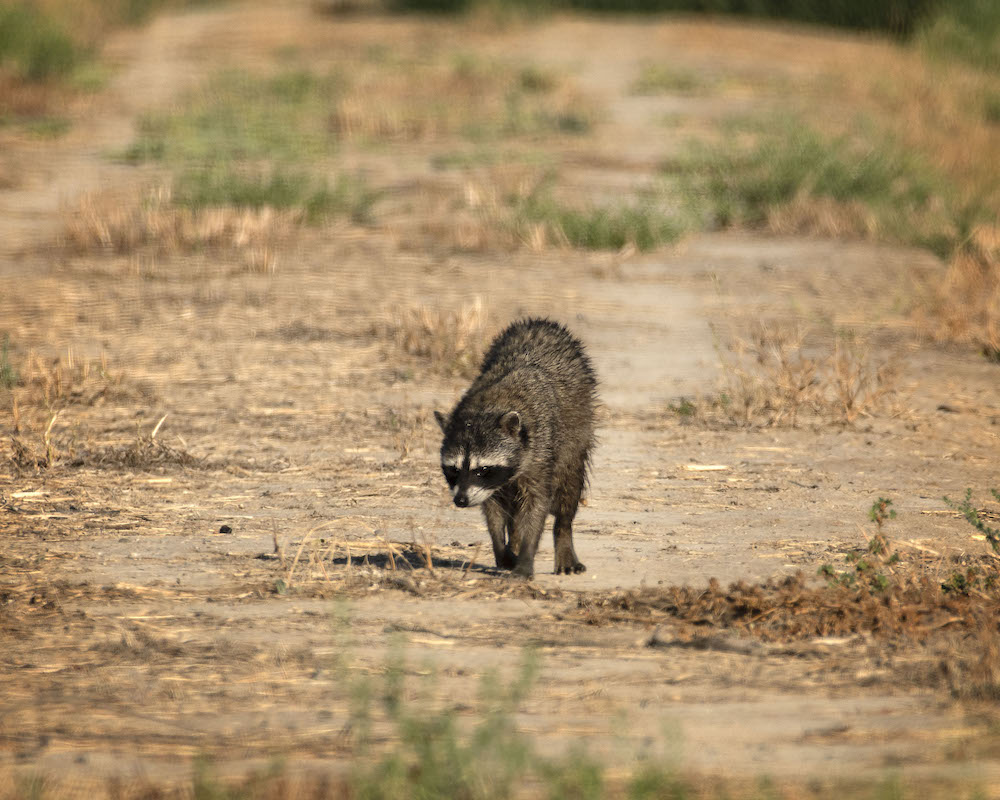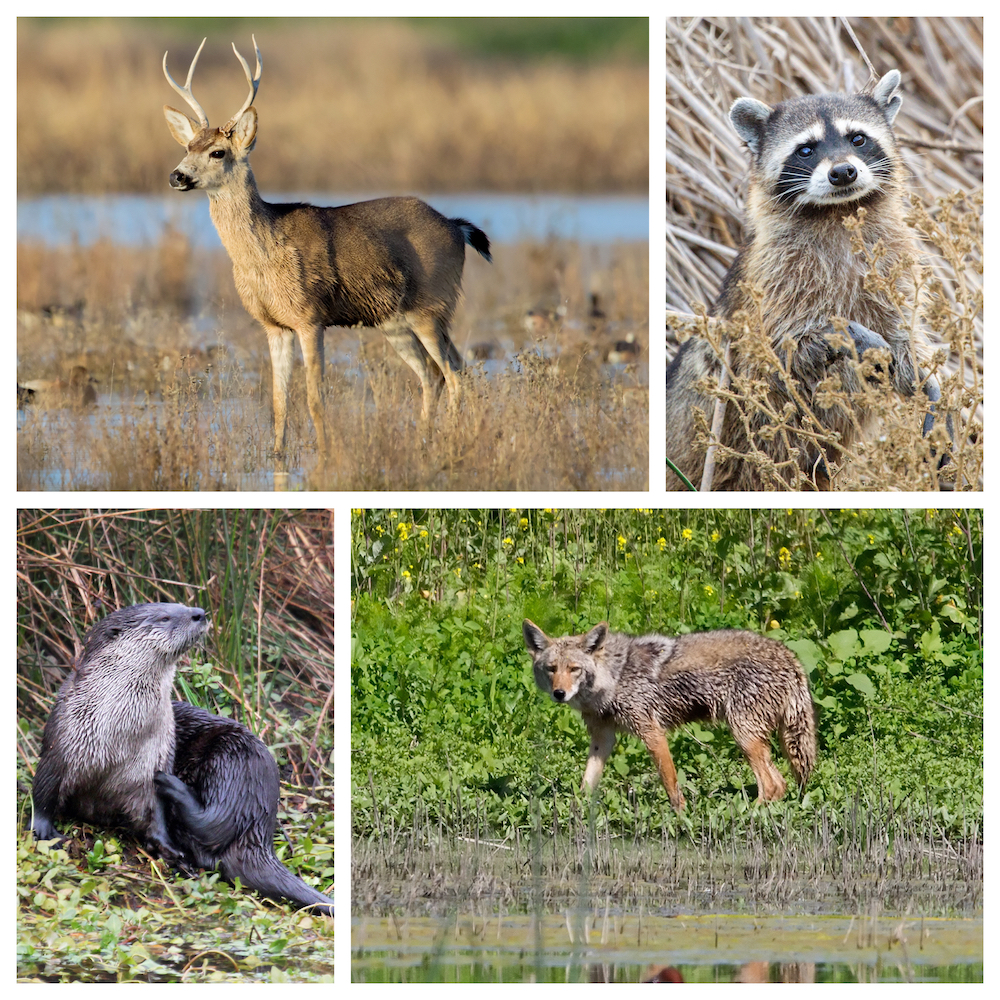Mammals in Our Ricelands
By Luke Matthews
If you just think about the numbers, there is no doubt that birds are the largest wildlife taxa that utilizes ricelands in California. Most of these birds take advantage of rice fields in the winter. However, there are a number of mammals that live in and around rice fields in the Sacramento Valley and utilize ricelands throughout the year.
River Otters are one of the most common mammal species that are seen in riceland habitats . These large aquatic mammals can commonly be seen swimming though irrigation ditches and canals, which are used to irrigate rice fields. Otters are voracious predators eating a wide variety of fish, amphibians, crustaceans, and even waterbirds. Although it is much less common, these otters will sometimes enter flooded rice fields to feast on crayfish, which thrive in these fields.

Raccoons also frequently utilize flooded rice habitats as foraging grounds. When there are rice fields in close proximity to shrubby or riparian habitats, the raccoons that live in those areas will venture out to hunt for crayfish and other invertebrates in flooded rice fields. Raccoons are primarily nocturnal so they are not seen as frequently as other daytime active species.
Coyotes also use riceland habitats frequently for hunting and raising their young. Although coyotes do not rely directly on the flooded habitat that rice fields provide, they hunt rodents, rabbits, and birds which feed on waste grains and vegetation from the rice fields. In addition to coyotes Gray Foxes are also known to use riceland habitats, although much less common than the coyotes.

Deer are known to use rice fields when they are near riparian strips. Mule deer that live in close proximity to rice fields will commonly venture into the rice fields to forage on or near the fields. Furthermore, during the summer the water provided by these growing rice crops may be the closest water source for some deer populations. In addition to deer, there is also a small remnant population of Pronghorn Antilope that live in a portion of the Sacramento Valley that is dominated by rice agriculture. As a result, pronghorn can be seen feeding on grains and grasses in dry rice fields. This is likely the only place in the world that this phenomenon can be seen.
As drought conditions continue to worsen in California, the flooded habitats that rice fields provide in the Sacramento Valley will become more critical for supporting wildlife populations. This flooded habitat not only supports millions of waterbirds but also can provide a key source of water for other wildlife species in an otherwise dry landscape.
Luke Matthews is the Wildlife Programs Manager for the California Rice Commission






